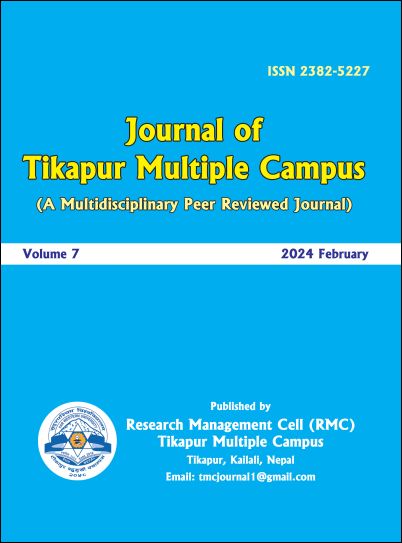Impact of Indirect Tax on the Gross Domestic Product of Nepalese Economy
DOI:
https://doi.org/10.3126/jotmc.v7i1-2.63172Keywords:
Government, revenue, significant, development, NepalAbstract
This study investigated the impact of indirect tax on GDP in Nepal from fiscal year 2057/2058 to 2078/2079 based on empirical evidence. Descriptive and analysis research designed was used. To meet this objective, time series macroeconomic data of GDP and indirect tax were used. Data are collected from economic survey, ministry of finance. The ordinary Least Square technique was employed to test the hypotheses formulated. The result shows that indirect tax contributes significantly to GDP. During the periods under review, the growth rate of indirect tax revenue was 16.52 % on average and the average ratio of indirect tax revenue to that of GDP was 9.98 %. The coefficient of determination was 98.4 %. P-value is very low (p < 0.001). The hypothesis suggests a positive relationship between indirect tax revenue and GDP in Nepal. The regression model indicates significance, rejecting the null hypothesis. Indirect tax revenue plays a crucial role in Nepal's GDP. The findings also reveal that there is the existence of both a positive and strong relationship between indirect tax revenue and GDP. Hence, the Government of Nepal should search for a way to boost the revenue from indirect tax by mostly supporting the configurations of networks among all the agencies of government and taxing authorities of the federal level, each providence, and local bodies to meet the growth and to facilitate public services for the country.
Downloads
Downloads
Published
How to Cite
Issue
Section
License

This work is licensed under a Creative Commons Attribution-NonCommercial 4.0 International License.
This license enables reusers to distribute, remix, adapt, and build upon the material in any medium or format, so long as attribution is given to the creator. The license allows for commercial use.




